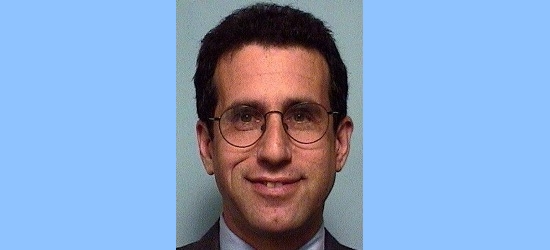
Fred Hiatt, Editorial Page Editor, Washington Post
Witness: Just a few months ago, Boston Public Schools leveled a two-week suspension on a school principal after she admitted that she did not report a case of suspected child sex abuse by a special education aide. After the principal's failure to alert the police or district officials, the aide transferred to another school, where he reportedly was busted in the act of abusing a special needs student.
So, where is that school principal today? She is comfortably back at work supervising teachers and children.
Two more cases of cover-up in public schools
In 2008, two high school administrators for the Los Angeles Unified School District (LAUSD) pleaded guilty and no contest in a court of law for failing to report the rape of an innocent 13-year-old girl by a school employee.
Where are they now? Both are back at LAUSD – with – nice promotions. (And one of the individuals has since been personally sued for another shocking case alleging "wrongful death, negligence and intentional infliction of emotional distress.")
The examples are endless.
Selective outrage
Do any of these cases upset the Washington Post? Apparently not, according to an editorial on Sunday.
What does agitate the paper, however, is the fact that a Jesuit Catholic official apparently failed to take aggressive action back in the 1990s against an abusive priest. (The official sent the priest away to treatment, which – while not nearly enough – was much more than what those school officials ever did.)
Because this official later held leadership positions on the boards of his order and of universities, this is enough evidence for the Post to forcefully declare that the Catholic Church "protects abusers" and "remains focused more on safeguarding its image."
The Post completely ignores the numerous unprecedented measures that the Catholic Church has taken in the past several years in its efforts to protect children. The result is that contemporaneous accusations against Catholic priests are extremely rare. In 2011, accusations that were deemed "credible" totaled only seven in all of the United States.
Back to school
Meanwhile, if the Post wants to cite an institution that "protects abusers" and "remains focused more on safeguarding its image," it should look again to the public school system.
A 2004 U.S. Department of Education report reported that "the most accurate data available" reveals that "nearly 9.6 percent of [public school] students are targets of educator sexual misconduct sometime during their school career."
The report cited an important study from the mid-1990s:
"In an early [1994] study of 225 cases of educator sexual abuse in New York, all of the accused had admitted to sexual abuse of a student but none of the abusers was reported to authorities."
That is an important and alarming fact:
Number of abusive educators: 225
Number reported to police: 0
So, in other words, as recently as 1994, it was the universal practice in New York among school administrators not to call police to report abusers.
The 1994 study also reported that only 1 percent of those abusive educators lost their license. In addition, most alarmingly, "25 percent received no consequence or were reprimanded informally and off-the-record. Nearly 39 percent chose to leave the district, most with positive recommendations or even retirement packages intact."
So here we have yet another case of the media simply using the decades-old clergy scandals as a tool to bludgeon the Catholic Church while ignoring massive abuse and cover-ups in our nation's public schools which are happening in our public schools today.
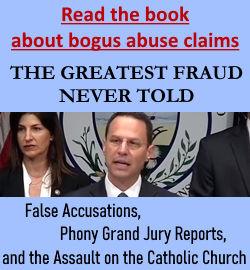

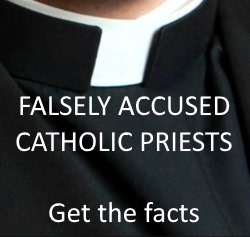
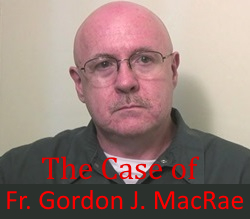
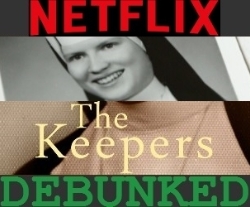
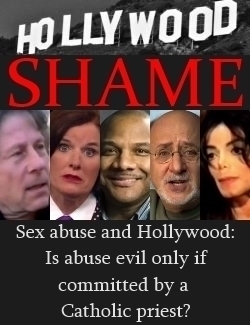
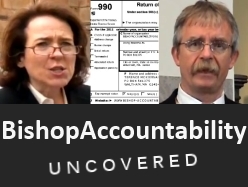
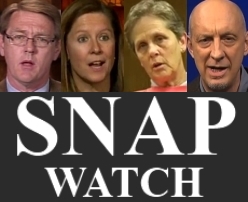
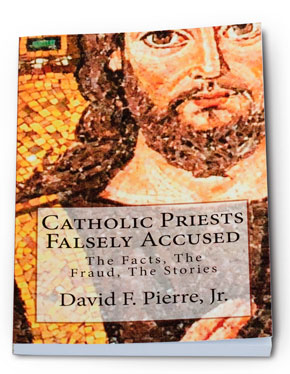
Looking at the Catholic abuse scandals as a phenomenon in their own right, I would say that there are a lot of groups interested in keeping the ball rolling. Looking at the phenomenon from a police/investigatve point f view, those 'interests' with motive would include:
Interests within the Church looking for 'democracy, diversity, and regime change' – as they have for almost half a century now, since the end of Vatican 2 in 1965. 'Democracy' is code for a Protestant-type polity and the reduction of the hierarchy to some sort of ceremonial role; 'diversity' is code for ordaining females to the priesthood (and thus opening the door to episcopal consecration and – who knows? – higher up beyond that; and 'regime change' means that the Pope, the hierarchy, and the Magisterium will all be reduced in authority (again that sort of Protestant approach).
Interests outside the Church:
'Progressives' from the Left who don't appreciate the Church's standing up for any moral or ethical Shape or tradition (which would interfere with the endless progressive quest for 'cultural space' for whatever anybody feels like doing).
Secularists who don't accept the reality or Reality of any Beyond, and who consider such belief to be nothing more than superstition and want to see the Church – as the strongest proponent of that Beyond – eliminated or at least greatly reduced in public credibility and teaching authority and symbolic presence.
A government that from both Left and Right does not wish to accept that it rules under the judgement of any Higher Law to which its actions must conform. Here we are back to the Church's struggle with the emerging monarchies of the Middle Ages. Only it's worse now since secularism and legal positivism (i.e. whatever a government enacts into law is law and there is no appealing to any other authority). We face – in treacherously 'democratic' guise – the monster described so pithily by Mussolini: "nothing outside the state, nothing against the state, nothing above the state".
Tort attorneys who know a great racket when they see one.
Advocacy groups for victims who have forged some unsavory links with the tort attorneys, acting as feeder-sources for clients who are wiling to make claims (especially ones going back decades).
Other professions and unions – with lots of political clout – who would very much like to not-be ever put on the same hot seat as the Church and are happy to see the Church kept in the lightning-rod position for as long as the game can be kept up.
Legislators who need to keep their 'bases' happy (secularists, progressives, radicals, and victimists on the Left; fundamentalists and military-misadventure-prone neocons on the Right), especially in an election year. For them the Church is both a handy target and a potential threat to the agendas of those 'bases' to which so many legislators at State and national levels have now indentured themselves. And at this point, when Identity Politics has pretty much fractalized any national sense of common purpose and common identity, the 'Necessary Enemy' or 'Necessary Monster' is one of the last – and so primitive – gambits left to keep the people both aroused andyet also distracted from more immediate and vastly more pressing problems (since this abuse problem has now been addressed roboustly and all extant indicators demonstrate the successes of the reform in the past 10 years).
Well said
In 1950 I entered a seminary with 60 classmates, after a vetting process that lasted 13 years, I was one of only 10 found holy enough to be ordined a "man of God".
What is the purpose of articles like this one comparing an institution like "Holy Mother the Church", the "Bride of Christ", "the Mystical Body of Christ" with lowly professions like the public school system? Do any of THEM claim to be God's "one, true, holy Catholic Church?" Do any of them require nearly as many years of vetting for ANYTHING, let alone HOLINESS before candidates can be allowed to be God's official representatives?
And when you compare sexual abuse in public schools to "over 4,000 American pedophile priests (who) had sexually abused over 10,000 children in America", what does " 225 cases of educator sexual abuse in New York" mean? Is it 200 case of abuse by one teacher and 25 by another? And how SERIOUS were those cases of abuse?
I am ashamed to have once been a member of the R.C. priesthood.
Cardinal Mahoney of Los Angeles protected and constantly reassigned a priest, Oliver O'Grady, who molested and raped a great many children under the Cardinal's jurisdiction, including a nine month old baby girl.
A 2004 research study conducted by the John Jay College of Criminal Justice at the behest of the United States Conference of Catholic Bishops estimated that between 1960 and 2004, over 4,000 American pedophile priests had sexually abused over 10,000 children in America.
[ http://www.houstonpress.com/content/printVersion/1783555 ]
The story of Oliver O’Grady and then-Bishop Mahony was the subject of the 2006 film, Deliver Us From Evil.
Indeed, the crimes committed by O’Grady were abominable, and the harm he wreaked upon victims is immeasurable.
However, I have posted an analysis and a rebuttal to the facts presented in the film:
‘Deliver Us From Evil (2006 film)’
-
To answer your other questions, Ray:
1. “What does ’225 cases of educator sexual abuse in New York’ mean? Is it 200 case of abuse by one teacher and 25 by another?”
No, the report makes clear that it is talking about 225 abusive teachers.
2. “And how SERIOUS were those cases of abuse?”
They were obviously serious enough to attract the attention of administrators and serious enough for them to take action (or inaction, as the case was)!
-
With every respect for Rev. Dubuque's statement of concern, I would make the following observations:
There is a second John Jay Report (released in 2011) which reviews the situation as it has developed since their first (2004) Report.
The first Jay Report dealt with allegations, which are not the same thing as admissions or findings of guilt.
That being said, I personally believe that things happened that should never have happened in at least some of those instances back then. And I am very glad to see these problems addressed.
The Church is indeed God's representative to humanity, but she is still a human organization – and has never claimed to be otherwise. The 'crooked timber of humanity' problem applies to her as much as it does to any other earthly and human organization.
The Church of today in the United States is thus a far cry from the Church of half a century ago or more, and especially different from what she was even a decade ago, when the abuse-matters broke into public awareness.
So as we should all pray with her, we should all also pray for her. It's a hell of a job that she has been given, and every prayer helps.